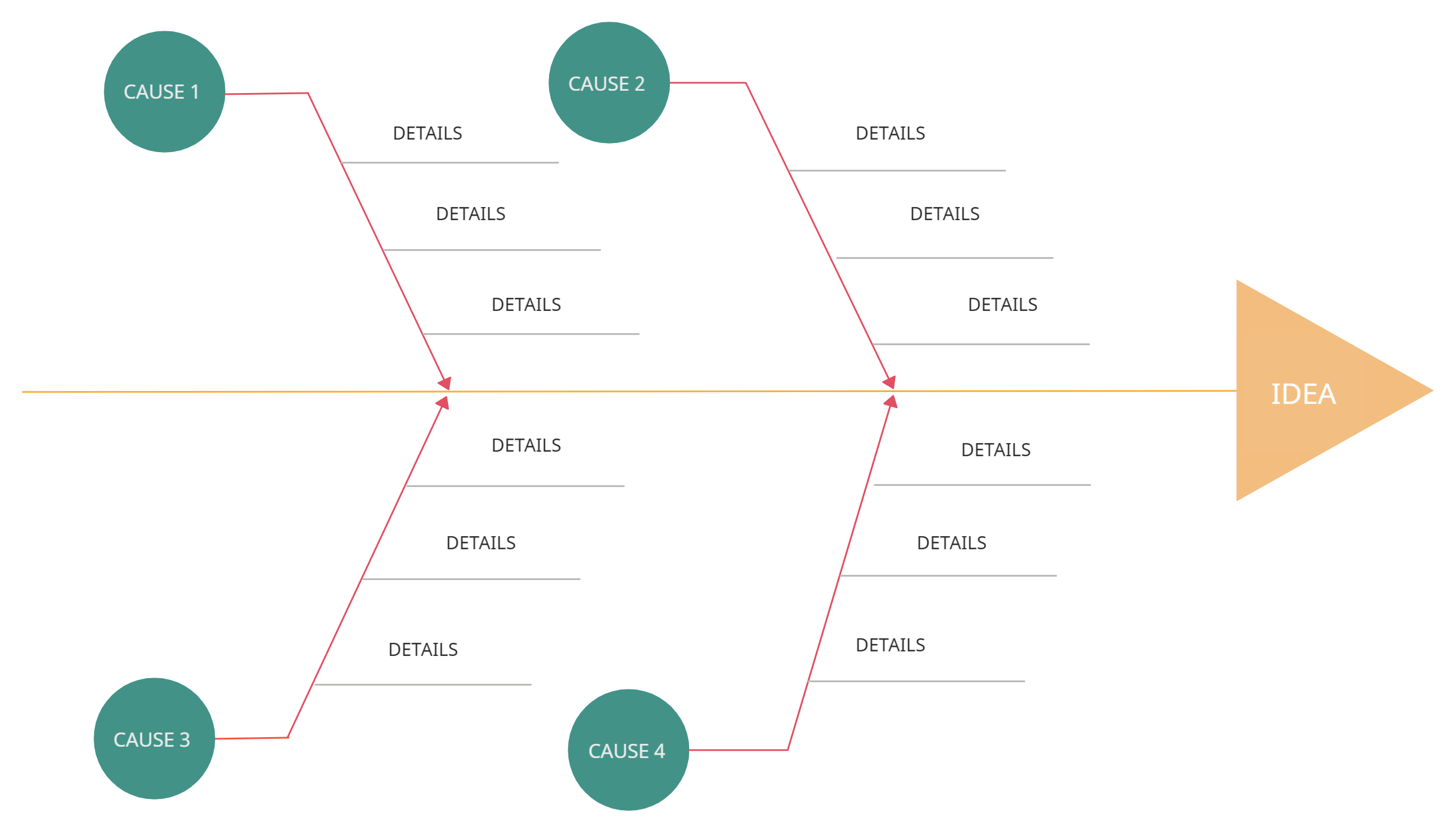At its core, program planning is the process of detailing the steps and resources necessary to achieve specific goals within an organization. It is more than just a task list; it is a strategic endeavor that integrates various elements such as budgeting, resource allocation, and timing to ensure the successful delivery of outcomes.
By understanding the structured framework and strategic elements of program planning, you will be equipped to lead your projects to success, ensuring that every aspect is meticulously planned and aligned with broader organizational goals.
The Importance of Program Planning
Program planning is a strategic process integral to the success of any organization. It involves setting objectives, determining the best course of action to achieve these objectives, and allocating resources effectively. Understanding the distinction between Project vs Process Guide is crucial as it highlights the broader scope and long-term focus of program planning compared to project management.
Here are some benefits of good program planning
- Strategic Alignment: Ensuring that the program’s goals are in sync with the organization’s overall strategy.
- Resource Allocation: Efficient distribution of resources, including time, budget, and manpower, to maximize program effectiveness.
- Stakeholder Engagement: Involving all relevant parties, from team members to investors, to ensure their interests are considered and they contribute to the program’s success.
Program planning is not just about creating a plan but also about integrating it seamlessly with the organization’s strategic management. This integration ensures that the program contributes to the broader business objectives, enhancing overall organizational performance.
The benefits of a well-defined program planning process are manifold. It provides a clear roadmap for achieving goals, improves efficiency by minimizing resource wastage, and enhances stakeholder satisfaction by aligning project outcomes with their expectations.
The Essential Steps for Effective Program Planning
Effective program planning begins with a deep understanding of the context in which the program will operate. This involves a thorough assessment of needs, a clear identification of program goals, and a comprehensive analysis of both stakeholder involvement and available resources. By grasping the full scope of the environment, program managers can tailor strategies that are both impactful and sustainable.
Assessing Needs and Identifying Goals
Identifying the core needs your program aims to address is the first critical step in program planning. This involves collecting data, engaging with community members, and analyzing existing gaps in services. Goals should be specific, measurable, achievable, relevant, and time-bound (SMART) to ensure they effectively guide the program’s direction. Tools like Root Cause Analysis Tools Templates can be instrumental in pinpointing underlying needs.

Analyzing Stakeholder Involvement and Resources
Stakeholders play a pivotal role in the success of any program. Understanding who the stakeholders are, their levels of influence, and their expectations are crucial. Utilizing resources like A Quick Guide to Effective Stakeholder Mapping can help in visualizing stakeholder relationships and planning engagement strategies. Additionally, assessing the resources at hand, including funding, personnel, and technology, is essential for realistic planning. The 11 Resource Planning Templates for Smooth Project Execution can provide structured approaches to resource allocation.
Conducting a Situational Analysis
A situational analysis provides a detailed examination of the internal and external factors that affect program planning. This includes political, economic, social, technological, legal, and environmental factors (PESTLE). Tools like Environmental Scanning Techniques can offer valuable insights into the broader context that could impact program implementation and success. This step ensures that the program is aligned with both current and future landscapes, making it resilient and adaptable to change.

Developing a Logic Model for Program Planning
Developing a logic model is a fundamental step in program planning, serving as a blueprint that outlines how your program will achieve its desired outcomes. A logic model not only clarifies the program structure and flow but also ensures that all activities align with the overarching goals.
Defining Inputs, Activities, Outputs, Outcomes, and Impacts
A logic model starts with defining the inputs, which are the resources needed for the program. These can include financial, human, and material resources. Next, the activities detail what the program will do with these inputs to drive change. This leads to outputs, the direct results of program activities. Outcomes follow, indicating the changes or benefits due to the program. Finally, impacts refer to the long-term effects of the program, often aligned with strategic goals.
Creating a Visual Representation of the Logic Model
Visualizing the logic model can significantly enhance understanding and communication among stakeholders. Tools like Creately offer advanced diagramming and whiteboarding capabilities, making it easier to create professional and clear logic models. With over 8000 professional templates, including a Logic Model Template, teams can effortlessly visualize their program planning process.
Here’s a simple structure to follow when creating your logic model:
- Identify and list all inputs required.
- Map out the key activities that will utilize these inputs.
- Define what outputs these activities will produce.
- Describe the expected outcomes from these outputs.
- Outline the long-term impacts these outcomes aim to achieve.
Ensuring Alignment with Program Goals and Objectives
Every element of your logic model should trace back to your program’s goals and objectives. This alignment ensures that every activity undertaken is purposeful and contributes directly to the end goals. Utilizing a structured thinking framework, like those provided by Creately, can aid in maintaining this alignment throughout the program planning and implementation phases.
By integrating these steps into your program planning, you establish a clear and structured pathway towards achieving significant, measurable impacts, thereby enhancing the effectiveness and efficiency of your program.
Practical Tips for Implementing Your Program Effectively
Implementing a program effectively is crucial for achieving desired outcomes and maximizing impact. This section provides practical tips and highlights common pitfalls to avoid, ensuring your program not only launches successfully but also thrives.
- Establish Clear Communication Channels: Effective communication is the backbone of any successful program. Utilize tools like 6-Step Guide to Crafting the Perfect Communication Plan to ensure all stakeholders are on the same page.
- Develop Comprehensive Training: Equip your team with the necessary skills and knowledge. Resources like Employee Training Plan Templates can be instrumental in this phase.
Create Detailed Action Plans: Break down your goals into actionable steps with resources with a visual action plan.
Monitor Progress Regularly: Keep track of progress and make adjustments as necessary. Implement frameworks using guides like Project Execution and Change Management Plan
- Embrace Flexibility: Be prepared to adapt strategies as the program evolves. Understanding and implementing change management is crucial
By following these best practices and utilizing the right tools, you can avoid common pitfalls such as lack of stakeholder engagement, poor resource allocation, and unclear objectives, which can derail even the most well-planned programs.
Leveraging Creately for Effective Program Planning
Effective program planning is a cornerstone of successful project management, particularly for technically savvy product managers who are constantly seeking innovative tools to enhance efficiency and collaboration. Creately, with its visual collaboration platform, stands out as an exceptional tool for this purpose. Here’s how you can leverage Creately to streamline your program planning processes.
- Enhanced Visualization: Visual tools help in mapping out complex processes, making them easier to understand and follow.
- Improved Collaboration: The platform’s collaborative features ensure that everyone involved in the program planning can easily share ideas and make decisions together.
- Streamlined Processes: With all tools and templates in one place, program planning becomes more streamlined and efficient, reducing the time from conception to execution.
- Iterative Design Process: Task analysis should be revisited throughout the design process, especially as new insights and user feedback are gathered. Iterative analysis helps in continuously refining the product to better meet user expectations. Learn more about this at How to Master the Iterative Process.
By strategically timing the implementation of task analysis, teams can ensure that their UX design is not only user-centric but also dynamically adapts to user needs and feedback throughout the development process.
Step-by-Step Guide to Conducting Effective Task Analysis
Conducting a thorough task analysis is pivotal in understanding user interactions and enhancing the user experience. Here’s a step-by-step guide to help you navigate through the process effectively:
- Preparation: Begin by defining the scope and objectives of your task analysis. Determine what you need to learn about user behaviors and the tasks they perform. This initial step sets the foundation for targeted insights.
- Data Collection: Gather data through various methods such as observations, interviews, and surveys. Utilize tools like Empathy Map Templates to visualize and organize user emotions, pain points, and behaviors, which are crucial for a comprehensive analysis.
- Task Identification: Identify and list out all the tasks your users perform. Break down complex tasks into manageable sub-tasks. This segmentation helps in understanding the task structure and user flow.
- Analysis: Analyze the tasks to pinpoint difficulties, unnecessary steps, and opportunities for optimization. Focus on user goals, and align your findings with business objectives to ensure relevance and applicability.
- Visualization: Use visual tools to map out task flows and user paths. This can help in spotting redundancies and generating ideas for improving the user interface and experience.
- Iteration: Task analysis is not a one-time activity. Revisit and refine your analysis based on user feedback and changing business needs to keep the user experience fresh and engaging.
This structured approach not only clarifies the user’s needs but also enhances the overall design strategy, leading to a more intuitive user interface and a better user experience.
Leveraging Creately for User-Centric Design and Task Analysis
Task analysis is a cornerstone of user experience design, providing invaluable insights into user behavior and needs. Creately, with its robust features, stands out as an exceptional tool for conducting thorough task analysis and crafting user-centric designs. Here’s how Creately can transform your UX design process:
- Visual Canvas: Creately’s visual canvas offers an expansive workspace where teams can map out user tasks and interactions visually. This feature is particularly useful for understanding and organizing complex user flows, making it easier to identify potential pain points and areas for improvement.
- Collaborative Workspace: Task analysis often requires input from various stakeholders, including designers, developers, and end-users. Creately’s collaborative workspace enables real-time collaboration, ensuring that all voices are heard and integrated into the design process, thus enhancing the development of customized user interactions.
- Visual Frameworks: Utilizing Lean UX Canvas Templates and other visual frameworks available on Creately, teams can systematically approach task analysis. These tools help in breaking down tasks into manageable components, which is crucial for creating effective and intuitive user interfaces.
By integrating Creately into your UX design toolkit, you not only streamline the task analysis process but also enhance the overall quality of your user-centric solutions. Whether you’re redesigning an existing interface or creating a new product, Creately’s features empower you to deliver designs that truly resonate with users.






